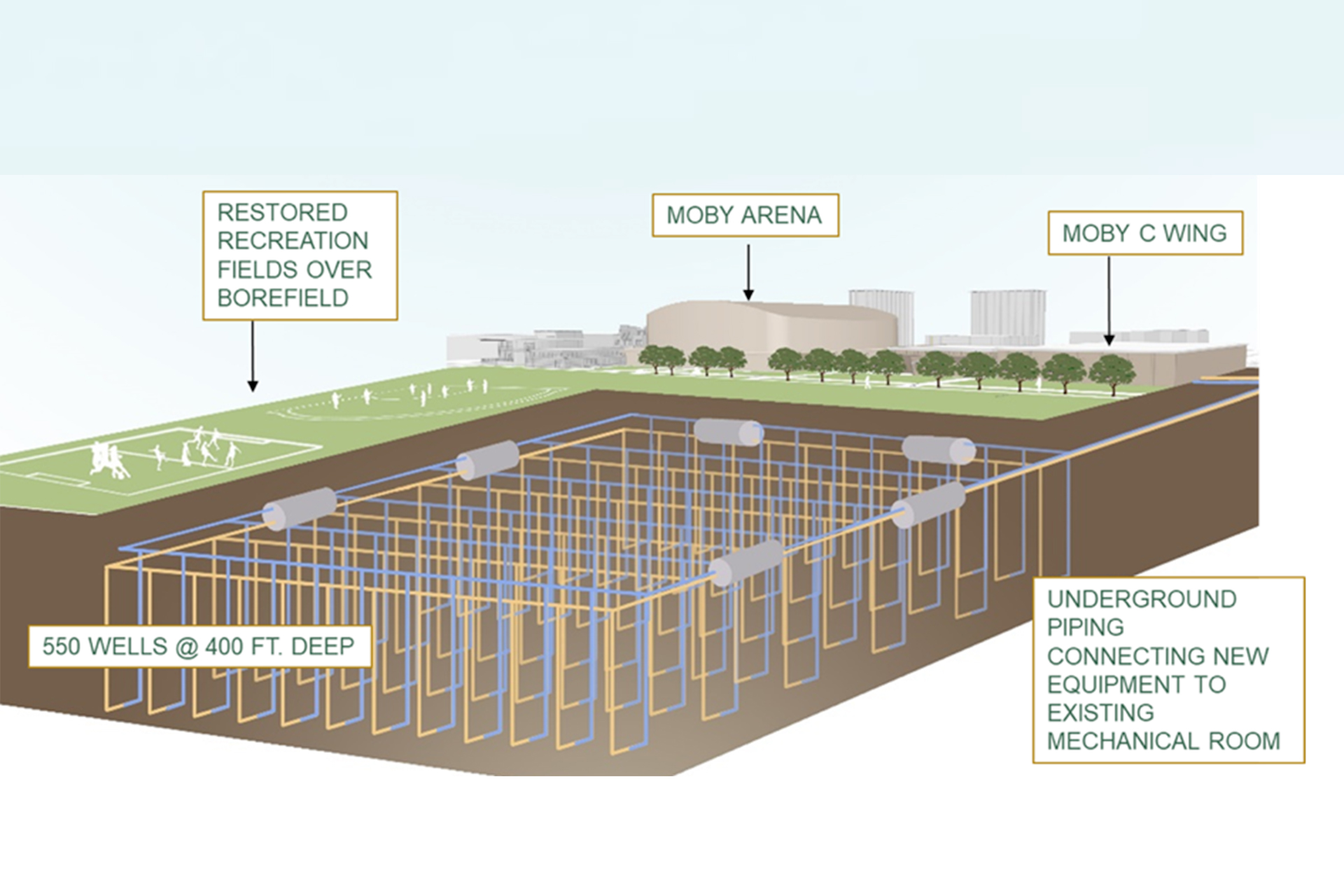
A diagram showing how a series of underground pipes help heat and cool Moby Arena.
One of the largest geothermal energy exchange projects west of the Mississippi has received a significant honor from the construction industry.
The $20 million Moby GeoX project has been recognized by ENR Mountain States as the project of the year. This trade publication serves seven states across the Rocky Mountain region and recognizes the top projects in the U.S. and around the world.
GeoX was also recognized for excellence in safety and sustainability.
Carol Dollard, an energy engineer at Colorado State University, said that she hopes the GeoX project inspires future generations to innovate more sustainable ways to heat and cool buildings.
“We have to invest the time and money and energy into building our buildings right and modifying the buildings we do have to get to zero carbon,” Dollard said. “And that means big, messy projects like this.”
What is GeoX?
Moby Arena has relied on heating from the steam system all the way across campus on the CSU Oval since it was built in 1960. The building’s cooling came from old chillers located at Moby. This system was carbon-intensive, and the steam system capacity was needed for the University to expand the buildings on the central part of campus.
This led to GeoX, a decade in the making project that replaced the 60-year-old high pressure steam and cooling lines in Moby with a six-pipe geo exchange system.
The system relies on 80 miles of u-shaped pipes deep underneath the intramural fields. It utilizes the natural energy of the earth, which heats or cools water to 50 degrees regardless of the season.
To heat the building, liquid runs through the system’s heat pump, which can boost the temperature of the 50-degree water up to 120 degrees. In the summer, heat from the building is transferred via the heat pump to the underground system, which brings water from below the intramural fields back to the pipes at 50 degrees.
This system required boring 342 well holes — each 550 feet deep. Work began in early 2020, and when the COVID-19 pandemic resulted in an empty campus that spring, it had an unexpected ramification.
“We got to start early and complete early because there were fewer people around,” said Tony Flores, the project manager for GeoX.
“I have to give kudos to Tony,” Dollard said. “Remember,: he managed a giant project with dozens and dozens of contractors in the middle of a pandemic.”
The effort to reduce Moby’s carbon footprint fits into CSU’s goal of moving to 100% renewable electricity by 2030 and reaching carbon neutrality by 2040.
GeoX is unique in scale, but not in concept. A handful of schools in the Poudre School District rely on a similar system, as well as Mesa State University and the IKEA store in metro Denver.